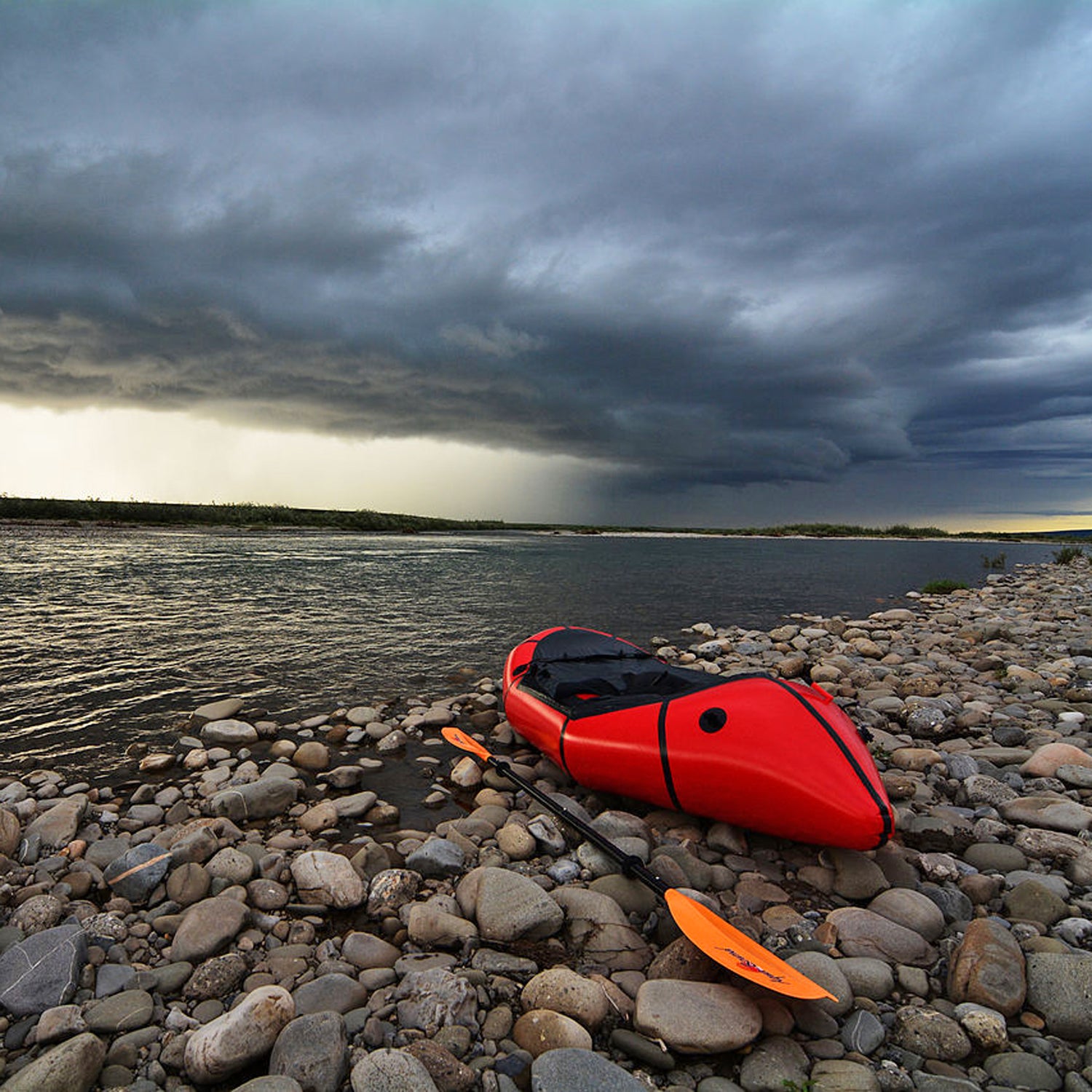Once upon a time, planning an outdoor venture meant you had to make a simple choice up front: land or water? Now the wet/dry divide is starting to crumble, thanks to recent advances in lightweight pack rafts.
Small enough (in theory) to fit in a backpack, but tough enough to ferry you and your gear across a lake or down a mellow river, these one-person inflatables are opening up new horizons in the backcountry. But is adding a float option to your next backpacking itinerary worth the added space and weight? We took the latest models for a paddle to find out.
Advanced Elements Packlite ($299)
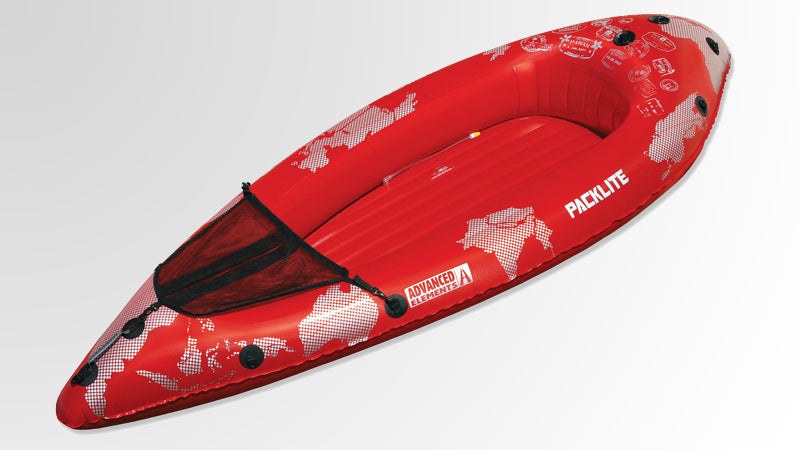
Best for: All-around recreation
Advanced Elements knows inflatable kayaks: its lineup includes 13 models, one for every year the company’s been in business. The , the baby of the family, was one of the burliest boats in our test, with three separate air chambers, including a full inflatable floor.
The Packlite looks and handles more like a kayak (a fat, stubby one) than a raft. It’s comfortable to sit in and paddle, and tracks surprisingly well. Twistlok and high-flow air valves make inflation and deflation quick and easy. There’s a molded-rubber handle in the pointed bow for easy manhandling, and nine D-rings around the edge that serve as attachment points. The nylon-mesh carry bag attaches to three of these up front, turning it into an on-deck gear bag for small items.
All this utility comes at a price: the Packlite was the heaviest model in the test, and the largest when packed down. So it’s not for ounce-trimmers, but of all the models it’s the one I’d choose for straight-up fun paddling. Throw it in the car for a day at the lake. On the trail, you’ll probably have to forego a few other luxuries to fit it in a pack.
Size (inflated): 94″ x 35″; Size (packed): 11″ x 11″ x 5″; Weight: 4 lbs; Capacity: 250 lbs.
FlyWeight Designs CrossFlyte ($299)
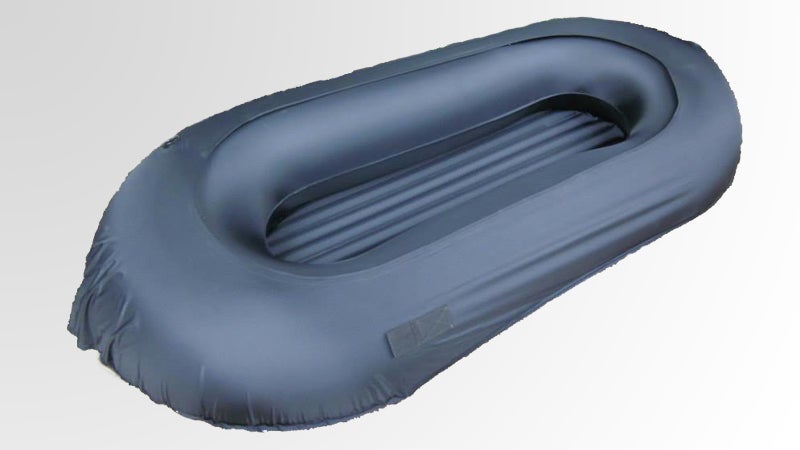
Best for: Rugged use
The was conceived with backpackers and fishermen in mind, and it shows in the tough, utilitarian design. The raft is made of two separate pieces: an oval inner tube surrounded by an outer skin/floor.
The two-layer construction protects the inner tube from all but the worst damage, be it rough stream bottoms, sharp sticks, or angry fish. And if you damage either piece beyond repair, you only have to replace that piece, not the entire raft. The CrossFlyte has four attachment points on the bow, plus two nylon oarlocks.
That’s where the bells and whistles end. As a result, the CrossFlyte feels like a work in progress. The inner tube is fat—12 inches in diameter along the sides, expanding to 16 inches at the stern—so even though it’s a big raft, it’s not nearly as roomy inside as you’d expect for something with a 310-pound capacity.
The CrossFlyte tracks moderately well, but puts you in a deeper paddling position than other models (especially since the floor has a tendency to sag), making it less confortable for small folks to pilot. It’s also relatively heavy and bulky when packed up.
FlyWeight plans to develop more outer skins for different uses, like a floorless one for fishing and a tougher one with a built-in spray skirt for whitewater. Until then, I’d save this one for the Class II rapids, piranha-infested waters, or car camping.
Size (inflated): 73″ x 40″; Size (packed): 13″ x 8″; Weight: 3 lbs 8 oz; Capacity: 310 lbs
Klymit LiteWater Dinghy ($225)
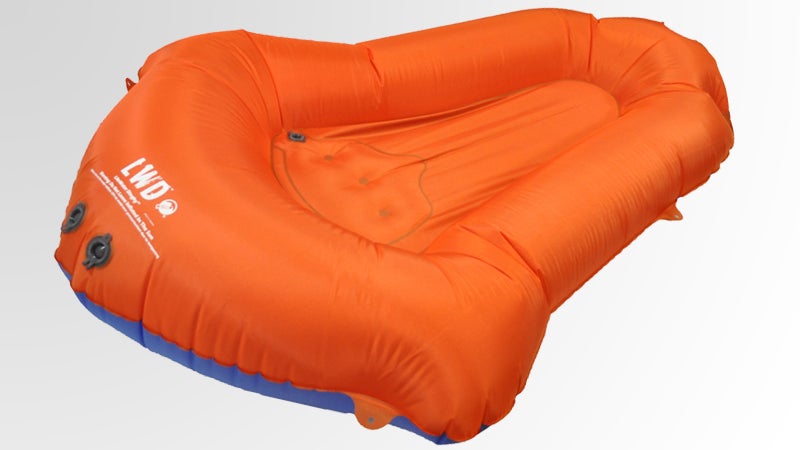
Best for: Gearheads
Small oval rafts tend to be hard to control and paddle because your center of mass (toward the back, near your butt) usually doesn’t match up with the center of buoyancy (in the middle). And with sagging floors and no back support, they’re nearly impossible to sit upright in.
Enter the , which at first glance looks like some kind of weird, overinflated pool toy. But under the orange-and-azure color scheme is one thoughtfully designed piece of gear. Klymit, a company known for fine-tuned inflatable sleeping pads, enlisted pro kayakers and pack rafters to help design its first raft out of 210-denier ripstop polyester.
A fat rear end and narrow front section moves the center of buoyancy back under the paddler. The floor is attached midway up the sidewall, not at the bottom, which lifts you higher out of the water. Add a small inflatable seat, and you have a raft you sit on more than in, with plenty of room along the sides for paddle strokes.
The catch? If you’re my size (6′), there’s really no room inside for anything but your legs, so you’ll have to all luggage on your lap. The low sidewalls means water splashes inside easily, and I found that, despite claims to the contrary, the LiteWater tracked the worst of the four test models. Even after some practice I was still yawing all over the Columbia River outside Portland.
Still, the LiteWater is light, packs up small, and the stuff sack doubles as an inflation bag, thanks to a valve that connects directly to a one-way valve on the raft. (Your lungs will thank you.) Ergonomics isn’t everything—and more space would be nice—but this is one comfy and unique little inflatable.
Size (inflated): 76″ x 45″; Size (packed): 9″ x 4.5″; Weight: 2 lbs 3 oz ; Capacity: 350 lbs
Supai Flatwater Canyon II ($299)
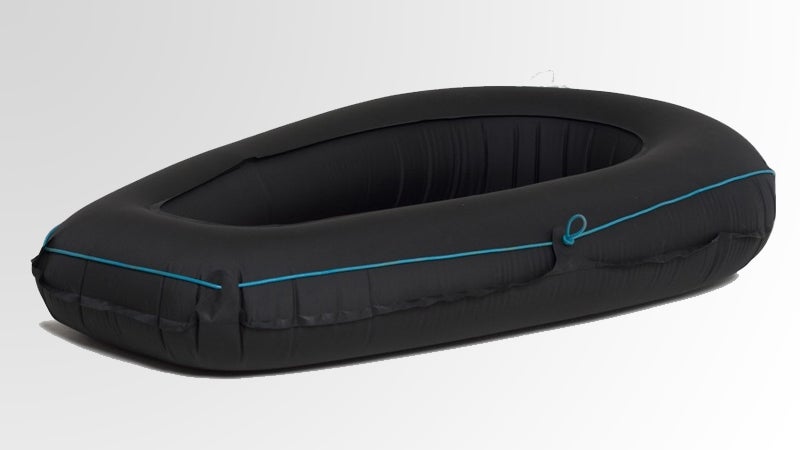
Best for: Minimalists
With a design honed on trips down the Colorado River in the Grand Canyon, where every ounce saved means one less to hump back out of that deep, steep ditch, the is a watercraft stripped down to the bone. A single layer of lightweight nylon (available in red or black) is welded using a process that makes the seams stronger than the fabric. The seven attachment points around the edge are extra tabs of material with holes through them, and there’s a single air chamber.
One clever design feature is the attached hose valve that lets you fine-tune the inflation while you’re still floating, so you don’t have to pull over every time you need to add or release air when the air or water temperature changes.
What you get: a 24-ounce raft that packs down to about the size of a widemouth Nalgene water bottle. I wouldn’t take it down a snag-strewn glacial stream in the Yukon, but the ultra-simple Flatwater is hard to beat on, well, flat water. (And for what it’s worth, the kiddos took to the traditional oval “raft-y” design the quickest, playing Whitewater Madness in the campground stream in no time flat.)
This is what a pack raft should be: small and light enough to bring along “just in case,” but useful enough to get you to some very cool places.
Size (inflated): 68.5″ x 42″; Size (packed): 8″ x 4″; Weight: 1 lb 8 oz; Capacity: 250 lbs


